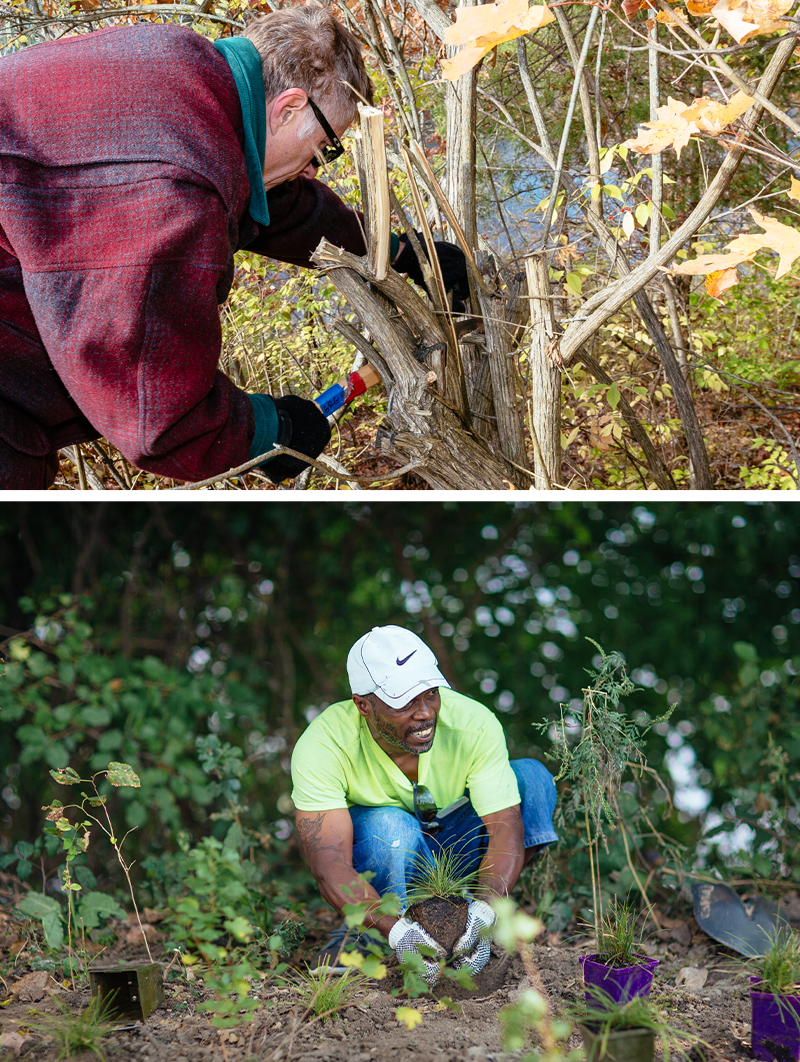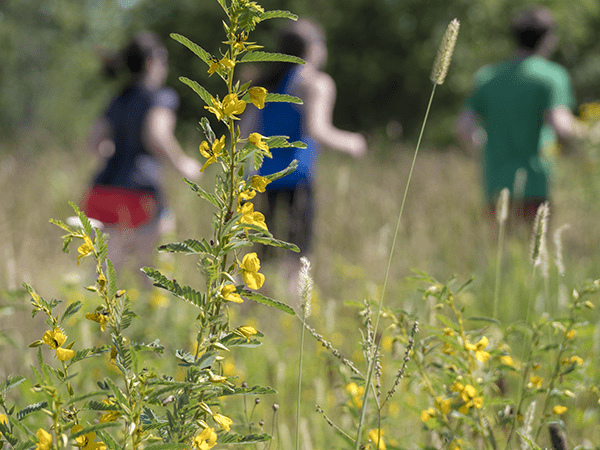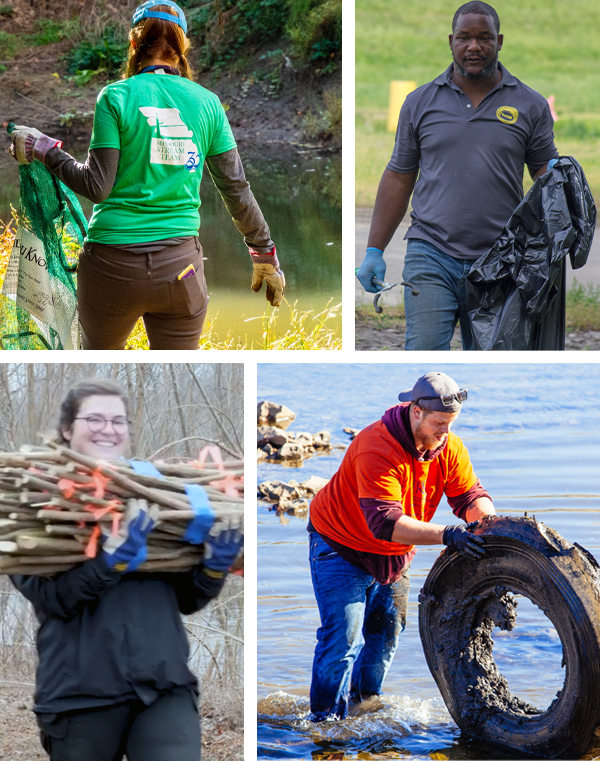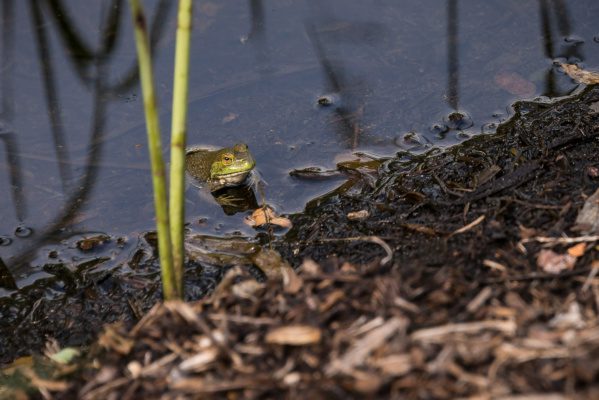Woodland Restoration
Woodlands in the St. Louis region clean the air and water, provide food and shelter for a variety of native wildlife, and hold soil in place. Many of the forested areas in our region have become overgrown with non-native plants, such as Bush Honeysuckle. Left unchecked, these fast growing and aggressive plants have the ability to take over an entire ecosystem. Working with partners and volunteers, Great Rivers Greenway has been taking steps to remove these invasive plants, replacing them with native trees and shrubs.

Prairie Reconstruction
Prairies provide food and shelter for a diversity of pollinators. Prairie roots store carbon, prevent erosion, and absorb water during heavy rains. The prairies of North America once covered more than 200 million acres including much of the St. Louis region. Sadly, less than 1% of prairie habitat remains today. Once established, these plants require little to no ongoing maintenance and provide immense benefits to native wildlife. With all these benefits in mind, we have been working with partners on several large prairie restoration projects along greenways.

Streambank Restoration
Great Rivers Greenway works to restore and maintain the long-term health of the waterways that parallel many of our greenways. We partner with several organizations around the region to hold scheduled cleanup days, such as the Confluence Trash Bash and River des Peres Trash Bash, which draw hundreds of volunteers to pool their efforts and remove tons of trash and debris in just a few hours. Beyond trash and tires, the streambanks along many of our region’s waterways have become overgrown with invasive species. We work with partners and volunteers throughout the region to coordinate the removal of these non-native plants, replacing them with native plant varieties with strong root systems. Increasingly, we have utililzed partners and volunteers to plant live willow stakes along waterways. These stakes thrive in wet conditions and grow quickly, providing benefits to the streambanks and wildlife.

Wetland Restoration
Wetlands provide food and habitat for fish and wildlife, improve water quality, store floodwater, and prevent erosion. Native animals visit wetlands like humans visit grocery stores. Decaying plants feed small insects and fish that are food for larger fish, reptiles, amphibians, birds, and mammals. Wetlands can be filled with water some of the time or all of the time. When you use a sponge to soak up a liquid and then slowly squeeze it out, you are mimicking the way a wetland stores floodwaters then releases the water into the ground. By slowly releasing the water, the potential for damage from erosion is reduced. It also creates a deep sponge of water for plant roots to soak up during otherwise dry periods. As water moves around plants in a wetland, sediment in the water settles on the wetland floor. Pollutants dissolved in the water are often absorbed by plant roots and microorganisms in the soil. By the time the water leaves the wetland, many of the pollutants have been filtered out by this process. Great Rivers Greenway works to protect existing wetlands along greenways. Additionally, Great Rivers Greenway works with partners to restore natural processes and wetland communities that have been damaged.

Engaging Partners
Great Rivers Greenway knows that we are just one organization working towards healthier watersheds and habitats. We cannot do it alone. It takes many organizations working together to truly make a difference. As such, we engage with hundreds of partners throughout the region, including many municipalities, park districts and other organizations that handle the day to day maintenance and operations of our region’s network of greenways. We understand that we are all working together, and to that end, we provide a variety of training opportunities throughout the year, at little or no-cost to participating organizations. These workshops and seminars provide attendees with the chance to gain hands-on experience with a variety of conservation related operations while also meeting with and learning from experts in a variety of areas, including:
- Stormwater management
- Prescribed fire
- Native plantings
- Chainsaw operation

